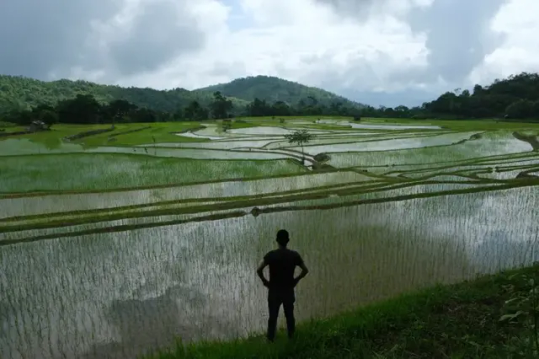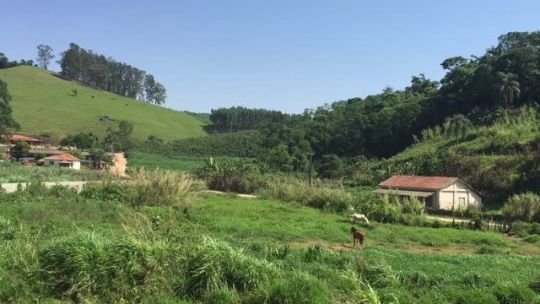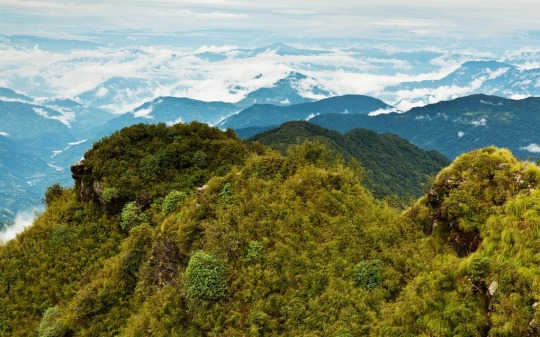#rennaisance world tour
Text


Beyoncé wearing Givenchy f/w 1999 rtw by Alexander McQueen for the Renaissance World Tour Book
Newest Cool
#newestcool#newest cool#fashion editorial photography#archive fashion#fashion archive#fashion moodboard#modesty high fashion#Beyonce#beyoncé#beyonce knowles#rennaissance#rennaisance world tour#beyhive#queen bee#beyonce renaissance#Queen beyonce#beyonce Carter knowles#blue ivy#renaissance tour#carter#Alexander mcqueen#vintage mcqueen#mcqueen archive#vintage givenchy#Givenchy archive
61 notes
·
View notes
Text

#rennaisance world tour#jay z and beyonce#beyonce#renaissance album#jayz#beyoncé#queen bey#beyhive#collage#black girl moodboard#moodboard#picture#profile picture#y2k aesthetic#y2k moodboard#2000s#early 2000s#current mood#rennaissance
19 notes
·
View notes
Text

Zach posted some Renaissance videos and a photo on his instagram story!
#zachary quinto#ig stories#beyonce#rennaisance world tour#ugh the whole screen recording was too big to post#sorry guys TT
11 notes
·
View notes
Text

Beyoncé in the Renaissance World Tour book
#beyonce#beyonce knowles#rennaisance world tour#beyoncé renaissance#beyoncé#renaissance album#renaissance#girlblogging#fashion#girlposting#photography#futuristic#futuristic moodboard#mugler#music#music icons#pop icons#pop icon#pop culture#pop culture moments#aliencore#spacecore
32 notes
·
View notes
Text



Feeling myself!
Thank you Queen Bey! 🐝
16 notes
·
View notes
Text

10 notes
·
View notes
Text
Mayor Beyoncé is so cute
5 notes
·
View notes
Text

DC5 🔥
#destinys child#beyonce#rennaisance world tour#rennaissance#kelly rowland#destiny’s child ogs latavia roberson#letoya luckett attend beyonce concert#reunion#fashionicon#fashion#luxury
4 notes
·
View notes
Text

EEEEEEEEE!!!! ABOUT TO SEE BEYONCÉ!!!!!
1 note
·
View note
Text
I got early access to Bey and Doja cat ticket sales I am literally the chosen one like…
1 note
·
View note
Text
Notes on a South Asian Tropical Cyrodiil (and more!)
So, many TES fans know that before Oblivion, Cyrodiil was supposed to be tropical. The most striking phrase to describe it, "most is endelss jungle", says it all. The quick and snarky explanation is that Todd Howard watched LOTR, was "inspired" by it, and that's why everything in Oblivion looks sort of like a Rennaisance Fair. In any case, I think it was a huge missed opportunity, especially in a world where most popular fantasy is European inspired, to have replaced what could have been very cool tropical enviroments with what is frankly a lame "Talos used his magic" lore retcon. You can read the 1st edition of the Pocket Guide to the Empire to see what we missed.
But it's not only Cyrodiil which we missed this way… Tamriel just makes more sense as a tropical continent. While the size and the exact location of the continent is discussed by nerdier nerds than me, I think it does make sense like this, and not only that, we have a very interesting world parallel to compare it to: India. From a tropical rainy south to the cold mountains of Skyrim, Tamriel is surprisingly similar to the Indian subcontinent, and many of its geographical quirks can be explained if, instead of assuming a temperate Cyrodiil, we go all out with that concept. This is going to be a long post, you have been warned.
So with that in mind, I'll try to make a not-so brief tour (with some evocative pictures along the way) of a rebuilt tropical Tamriel, following the rains of the moonson:
The position of Tamriel, in this case, would be roughly where the Indian subcontinent is located in real life, that is again, tropical, stretching the Tropic of Cancer (is there a name for the tropics of Nirn? Interesting to think about) Here, we see our numbers pan out well: Tamriel is mentioned to be between 4000 and 3000km across east to west and 2000 and 3000km south to north. VERY, VERY roughly, there is 4000km between Pakistan and Myanmar, and 3000km from Sri Lanka to the northern tip of Tibet. Plot that on a map, and you already can see some coincidences. Now, this is a rather average continent, not Pangea sized like some imagine Tamriel to be. This does help explain why, for example, the interior of Cyrodiil is rainy and good for agriculture instead of a desert. But it also means that it's very likely that Tamriel is ruled by monsoons. Monsoons are complex, but they basically form when there are plenty of warm places for water to evaporate (the South Indian ocean), and mountains that block cool winds from the opposite direction (the Himalayas). We have a very similar situation here, with a mountainous Skyrim on the north of a tropical Cyrodiil facing an equatorial southern ocean. So, what happens are monsoons, perhaps not as strong as IRL India, but carrying rains very deep into the continent. This would feed the rivers and the rich agricultural areas of Cyrodiil, and would have some other consequences.
So let's imagine our trip South to North. In the South, in Black Marsh, Blackwood and Lleyawiin, and Pellentine (southern Elsweyr) we would find, much like in the original lore, humid tropical climates, jungle, wetlands, and my favorite, mangrooves. I would expect mangrooves to stretch in this whole area, across rivers. In fact, one of the reasons why Black Marsh could be so hard to explore and control by the Empires at Cyrodiil would be the presence of thick mangrooves all over its coast. This is the region of Cyrodiil that would most resemble "endless jungle".

(Rice fields in India, what I imagine most of this Tropical Cyrodiil would look like)
However, as any lore person knows, Anequina, northern Elsweyr, is arid desert. Does this mean a contradiction? Far from it, we have a similar example in IRL India: the Deccan Plateau, which has a semi-arid to arid climate. This can be easily explained by higher elevations up to a small mountain chain separating it from Cyrodiil to the north, and the fact that little rain would reach behind this "Anequina Plateau" would make the region of Kvatch and Anvil more dry much like in canon, in this case, more scrublike. This highland desert would not be as harsh as Elsweyr is usually concieved, maybe, but its driest regions might justify places such as Dune. (On that matter, it always bothered me to read about the "cities" of southern Elsweyr and there being only two or three there. If I had to redesign it, I would move some from the north to the south).

(the Deccan Plateau in India, it gets greener or drier according to the monsoon)
Keeping on our tour of Tamriel, the Topal Bay and the very rainy Black Marsh funnels the rainy monsoon from the south towards central Cyrodiil. Here we find the endless jungle of the Nibenay Valley. But unlike the rainforests of Elsweyr and Black Marsh, these dense forests and rich river plains are mediated by the monsoon winds, with dry seasons alternating with copious rain. This has huge effects on agriculture and culture in general, as agriculture is defined by the rythms of the rain. Keeping with our South Asian theme and the 1st edition of the Guide to the Empire, Cyrodiil would have huge extensions of rice paddies, as well as terrace farming and much hardier crops in the highlands, instead of the… well, almost absent agriculture we saw in Oblivion. The food, clothing, architecture and overall culture of Cyrodiil would be very different with this. The original Pocket Guide said some of its main exports besides rice and fruit are moon sugar and silk. Moon sugar in Cyrodiil, can you believe it?
Another thing I imagine Cyrodiil would be famous for would be fish and seafood, well, river food. Rice plantations can host fishes and crustaceans to get some extra protein, and well, what about mudcrabs? Hell, as preparing muddy soil is vital for rice cultivation, no wonder mudcrabs are considered a nuisance. Imagining critters in gameplay in such an enviroment also makes my mind roam. Tigers, elephants, rhinoceros, and this is not even getting into the more mythical creatures you could find, instead of endless wolves… Rice cultivation is also more labor intensive than other crops, and it also has a deep impact on the terrain, "terraforming" so to say, huge expanses into paddies and terrace farms. This level of cultivation also requires an established infraestructure of irrigation. While this does not necessarily means a centralized goverment, as farmers can build it and maintain it by themselves, the rise of an empire, i.e., the Empire, will also increase the complexity of these systems, adding canals, dams, reservoirs and more ambitious projects, like we see in India and China. I am sure some people more knowledgeable about those cultures can comment more.
While this Cyrodiil is a tropical/subtropical region covered in "endless jungle", some parts might indeed resemble the rolling hills and grasslands you see in Oblivion. Deforesting jungle for pasture is something very common around the world (some have joked this mass deforestation was later in canon explained as a gift from Talos lol) and you can see the results, like in tropical Australia and my closer Mata Atlantica, do superficially resemble temperate pastures in say, Europe. Until you notice the palm trees, of course. But yes, I can see the Nords being a mostly herding people (more on that below) bringing their sheep and cows to the tropical lowlands and, well, deforesting to make space for them.

(ranches in Sao Paulo state, Brazil, notice the palm trees)
Imperial City just so happens to be built in an island in the middle of several river crossings, in what seems to be a swampland. The first thing that came to mind when I read that was Tenochtitlán. The districts of Imperial City would have been built over the centuries on artificial islands on a shallow lake, using plentiful mud and organic matter to make fertile chinampas. I believe this would make for a striking sight. Instead of just a city in the middle of a empty island, you would see the White-Gold tower and the rest of Imperial City rising from Lake Rumare, surrounded by rich farmland and its districts joined by walkways. (much like the old descriptions, actually, could you believe I wrote that without reading them?)

(Reconstruction of Tenochtitlán... and I just noticed, it's surrounded by (volcanic) mountains too, much like Imperial City)
Much like the Pantanal is one of the sources to the Paraguay River (which merges with the Paraná and then the Río de la Plata) IRL, here, the swamps of central Cyrodiil would be the source of the Niben. This does raise an interesting question, where is the source of the Niben? Is it Lake Rumare? No, I believe it would be several smaller rivers all the way from Bruma and even Skyrim. These small, violent mountain rivers eventually flow into the Rumare wetlands and only THEN in the placid great Niben. You DON'T want to be caught in one of the mountain valleys in rainy season. This does raise the question; won't the developments upriver, like Imperial City itself and the surrounding farmland, affect the course of the river downwards? There's plenty of water from the rain, but a more developed Cyrodiil might indeed have to grapple with this, supposing, for example, they manage to dam the river.
Looking west, we got the Colovian region, said to be composed of drier highlands and cliffs in the early Pocket Guide. Probably cut from the rain because of the Anequina Plateau, this is indeed more arid or "mediterranean", though I actually see it as more Australian. Maybe some of the drier parts near Hammerfell, resembling Argentine Cuyo and the northwest, would be a distant cry from the wetlands, having thorny dry forests and dry valleys, where yes, you could plant wine. The wetter cloud forests (much like the Yungas in South America, the place where the rain reaches last) could maybe be the home of the last pre-Imperial cultures of Cyrodiil. Fascinating places.

(Jujuy, Argentina. Just *near* are the Yungas cloud forests, where the last rains from the Atlantic meet the Andes, making for some AMAZING places)
Given that I mentioned enviroments near to/on the Andes IRL, let's talk about potatoes. Potatoes are unique crops, because they are the only ones who offer such calories and also be planted in cold enviroments like Europe. Or Skyrim. The discovery and spread of potatoes would cause demographic shifts on people living in cold areas. And they also originated in a unique enivorment IRL: the Andes, actually with possible hybridization from the Magallenic foresWHAT I MEAN, is that potatoes are very important and have been domesticated in very specific conditions. The Wroghtgarian Mountains would seem like a perfect equivalent of the Andes at the first glance, but they would be very different. The Andes, located between the Pacific Ocean and the greater Amazonian region, are very, very unique enviroments. These mountains, however, are in between inner seas. Something like the Atlas or the Alps? In any case, if there is some people who would appreciate hardy tubers that can grow in mountainous places, they are for sure the Orcs, or perhaps the Reachmen. Maybe an hybridization even between them?
This returns me back to Bruma and Skyrim. Some people (who make those excellent Oblivion mods) imagine Bruma with a Tibetan flavor. Personally, I imagine it more like Pakistan or Afghanistan, with lots of mesas and plateaus and valleys. It would look dry and rocky with some very fertile valleys by snowmelt, but it would look like a snowy wonderland on winter, indeed, Pakistan and Afghanistan are very snowy. Eventually, of course, ending up in the great barrier of the Jerall mountains and finally, Skyrim.

(the Alps? Skyrim? No, this is Kashmir on winter!)
In this scenario, Skyrim would be a quite dry place… or would it? There is no need for the Jeralls to be a straight line of peaks like the Himalayas. They could be a more "broken" series of mountains, like the southern Andes, but in any case, the rain from the south would clash into the higher mountains. Indeed, that is what actually happens in the Himalayas, the foothills of the Himalayas are some of the rainest places IN THE WORLD. These small valleys are something very unique and not very well known part of the world IRL. I can imagine the Skyrim equivalent would be as unique too, hard to navigate and live in. The forests of the Rift and Falkreath would be mazes of windy forests valleys, each with their own unique secrets under a perpetual fog and drizzle. This is a very interesting enviroment to imagine, where again, some of the older cultures of Tamriel could still live.

(forests of Bhutan, note how the humid valleys stretch into the distance before the cold Himalayas begin)
However, what does Skyrim look like once you cross the border with Ralof? I imagine some sort of more fertile Tibet, not as high as the Tibetan plateau, allowing for forest and alpine tundra. This is mostly because, while Skyrim is high up, I don't imagine as a plateau, but rather a series of broken mountains like the North American Rockies, which makes sense when you account for all the volcanic activity (there is another super-volcano down in Skyrim but nobody notices). I imagine that Skyrim would be a primarily herding pastoral land before the introduction of hardier crops such as potatoes, and even then. Nord culture would be very interesting reimagined like this; hillforts guarding herds of sheep and cows. It would also create a clash between the very, very agrarian south and the nomadic herding north, with High Rock and Hammerfell a gradient between the two.
I decide I will stop here, I haven't even touched Valenwood (though its subtropical forest seems rather coherent to me), High Rock (the most boring part of Tamriel IMO), Hammerfell, Summerset Islands (if you don't have tropical elves in your setting, you're a coward), or whatever the hell is going on Morrowind. But I hope you enjoyed this worldbuilding exercise and how to make sense of Tamriel's crazy geography. Next time, I'll try to play with tectonics and see if we can make it even more interesting.
But here we enter a problem; if we are operating on a level where Cyrodiil is roughly at the same latitude of India, wouldn't that make Skyrim too far from the poles to allow its tundra like climate, even with elevation? No doubt. Tibet is only as cold as it is because it's the roof of the world and far from any ocean. The northernmost tip Skyrim, like Tibet, would be at the latitude of Turkey, Korea or California, which can get quite cold, but not to the level of what we see on Winterhold or Dawnstar (Solitude sounds familiar, though). What's more, having an ocean up north would only moderate the temperature. Cool currents often don't bring cold per-se, just decrease rainfall. This would end with a very temperate and pleasant Skyrim instead of tundra. Which is on its own, interesting to explore.
Could Nirn be going through an ice age, like it's implied with the dissapearance of Atmora? Possibly, but it would imply revising everything I said before, as ice ages decrease rainfall and mess up with weather patterns all over the world. A colder Nirn would explain a lot, though.
If you liked what you read and would like more worldbuilding, consider tipping me on Ko-Fi and send me stuff to talk about, or just send an ask! I'm the kind of guy who reads encyclopedias and RPG manuals for fun, so I have plenty to talk about about everything from fantasy to science fiction to speculative evolution and alternate history!
#worldbuilding#tes#elder scrolls#skyrim#oblivion#the 'do more tropical worldbuilding you eurocentric cowards' agenda#fantasy#cosas mias
239 notes
·
View notes
Text

My profile picture, if anybody wanted it 💓💗💖💘💕💞
#moodboard#black girl moodboard#y2k moodboard#2000s#early 2000s#y2k aesthetic#twitter#quotes#queen bey#beyoncé#jay z and beyonce#beyonce#rennaisance world tour#rennaissance#concert#concerts#profile#profile picture
16 notes
·
View notes
Note
enjoy the concert!!!!
I've just left The Weeknd's show tonight, and post-concert depression does exist :(
I think I have enough videos. Hopefully I don't enter post concert depression until next week! 🤭💕😂
2 notes
·
View notes
Text







Back at it again with another doll! This is my ode to Beyoncé, featuring the iconic Loewe catsuit from the Rennaisance World Tour.
Over 6000 rhinestones were hand placed to create this piece. She was a labor of love, and I am quite pleased with the finished doll!
#ooak doll#art doll#my dolls#dolls#beyonce#yeah the color grading on the photos is all over the place#photographing this doll is a nightmare actually!!
9 notes
·
View notes
Photo

With a plethora of things to do in Florence and considered one of the important cultural and historical hubs of Italy it’s easy to see why so many travelers flock to this city. what
Florence, or Firenze in Italian, is the quintessential Italian riverside city filled with some of the countries best sights and foods. It’s famed for world-class cuisine, museums, classic works of art, and the surrounding Tuscan countryside. The architecture in Florence pulls you in and begs for you to get lost in its historic heart.
Florence is known for being the birthplace of the Renaissance period and packed full of history. When you walk the narrow cobbled stone streets it appears as if little has changed with marble basilicas, dark chapels, gas lanterns, and enchanting frescos. Florence is a located in the central-north of Italy known as Tuscany, halfway between the landlocked country of San Marino and the world’s most iconic leaning structure, Pisa.
When many think of Italy, it’s generally the Colosseum, Leaning Tower of Pisa and the canals of Venice along with delicious treats of gelato, pizza and pasta and while that’s generally a true statement, places like Florence are becoming more and more popular to those wanting to see the other side of Italy.
Florence out of all the places I visited in Italy had the most charm about it with a constant relaxed vibe from the river Arno to the gardens of Boboli and beyond. This Italian city is easily a highlight of any trip to Italy!
Table of Contents
1.)
2.)
3.)
4.)
5.)
6.)
7.)
8.)
9.)
10.)
11.) Eat Your Way Through Tuscany
12.)
13.)
14.)
15.)
1.) Wander Through Boboli Gardens
Giardino di Boboli or The Boboli Gardens tops the list of the most impressive gardens I have visited anywhere in Europe and I am generally not fond of heavily mowed lawns, manicured hedges, and water fountains, but the caretakers of The Boboli Gardens do an exquisite job in maintaining an extremely large area of land to such perfection.
I was born and raised on a farm, 500 kilometers from the closest city and often feel overwhelmed by the chaos of cities, to cope I often seek out the botanical gardens for peace and quiet. For me, it takes the top spot for what to do in Florence.
Located behind the Palazzo Pitti a grand Rennaisance palace that was built in 1458. The historic gardens date back to the 16th century and are considered the first of the grand Italian gardens famed for the century.
There is a certain charm that lay over Giardino di Boboli that reminds of the movie ‘The Secret Garden’. Giardino di Boboli is also a great place to watch the sunset over The Arno River as the last rays of light hit Piazza Del Duomo.
Price: €10 Full / €5 Reduced (Summer March 1st – October 31st) €6 Full/ €3 Reduced (Winter November 1st – February 28th)
Hours: Open every day from 8:15 a.m. — Closing times vary from 4:30 p.m. to 7:30 p.m.
Location: Plaza Piti
2.) Gaze Upon Duomo di Firenze (Florence Cathedral)
Florence’s most famous building, Piazza Del Duomo
The beating heart of Florence has to be Piazza Del Duomo and the Florence Cathedral. The cathedral is one of the world’s largest cathedrals built in the late 12th century and is an icon of Florence and visible throughout the city.
The interior of the Duomo is fascinating the dome was the largest in the world until the modern era with new construction materials. is great seeing from the inside with ancient monuments and artifacts, this cathedral is best seen from various vantage points throughout Florence especially during sunset and sunrise as the roof and dome of the cathedral turns a bright orange and red which dominates the city landscape.
If you want to explore the cathedral, you might want to do so early as possible to avoid the lengthy wait times. Entry into the cathedral is free; however, if you wish to visit the crypt dating back to the 15th century, the dome, baptistery, and the museum are all combined into the cumulative ticket for €18. If you’re for a more in-depth experience you can book a guided tour along with an expedited ticket to avoid the lines here
Price: Free — €18 Combined Ticket (Entry to crypt, baptistery, dome, and museum)
Hours: Everyday 8:30 a.m. — 7:00 p.m. (Saturday until 5:40 p.m.)
Location: Duomo di Firenze
Book Your Guide for the Cathedral!
3.) Explore the Arno River
Exploring the Arno River
The waterways of Europe were the original highways and sources of the trade so many classic European cities and towns are based along waterways. Florence sits on the Arno River and it is the central point of the city. A walk along the central waterway is an awesome way to take the historic city.
A walk here is wonderful for photographs of Florence and provides great viewpoints of the famed Ponte Vecchio Bridge. The Arno is a classic Italian river with an array of bridges some few hundred meters apart meaning you can walk from one side to the other with ease to catch views from a different perspective.
Quick fact: if you follow The River Arno for long enough, it will lead almost directly to the Leaning Tower of Pisa and the Mediterranean!
4.) Cross the Ponte Vecchio Bridge
Florence’s most famous bridge
Just as the rivers of cities were vital lifelines of cities so were the bridges. With its long history, Italy is filled with famed bridges such as the Rialto Bridge of Venice and Ponte Vecchio of Firenze. The Arno River has more than one bridge that crosses its flow yet none of those bridges hold more attention that the famed Ponte Vecchio.
The original bridge was constructed by the Romans and dates back millennia, but the current bridge dates were constructed in 1345 after several versions were swept away in floods. Its historical significance was even spared by Hitler as the Germans destroyed all the bridges in the region during their retreat in 1945, except for the bridge under explicit instructions.
Over the centuries the Ponte Vecchio has been home to a number of shops that line the bridge. Originally the shop fronts were occupied by butchers who would cut and chop up meat to sell while discarding the scraps into The Arno. Now, the shops are occupied by jewelers and art dealers. Each storefront has its own distinct color which can be viewed from standing upon the Ponte Santa Trinita Bridge or roads running adjacent to The Arno River.
At one point in time, Ponte Vecchio was the only bridge to connect the north and south sides of the river and a daily commute past the butcher storefronts wasn’t exactly an ideal thing to do, especially early in the morning. During the rule of The Medici, they ordered that jewelry stores replace the butchers and the throwing of the meat into The Arno be ceased.
Location: Ponte Vecchio Bridge
5.) Enjoy the view from Piazzale Michelangelo
Florence has few viewpoints as good as the lookout high about the banks of the Arno River; however, getting there is a bit of a burner on the calves or if you prefer, take a bike or Vespa to the top as the views are the best anywhere in Florence.
If you know what Florence looks like, it was probably taken from Piazzale Michelangelo. Getting that epic shot of the city can be tricky due to it being one of the most photographed places in Italy so get there extra early for sunrise shots or early for sunset shots. One of our favorite times to photograph in busy spots is what is commonly referred to as the blue hour just after sunset as most photographers leave once the sun drops below the horizon. If you’re a photographer wondering what to do in Florence at sunset this is a solid photo spot.
Location: Piazzale Michelangelo
6.) Climb the Tower at Palazzo Vecchio
Walking the streets of Florence
One of the cool things about Florence is that most of its main tourist attractions are within 10 minutes walking distance of one another and if you go to the famous lookout of Giardino del Bardini, you will see just how close everything is together.
The Palazzo Vecchio is the only other structure in Florence that will give the Piazza del Duomo a run for its money in size. Like most cathedrals and churches in Italy and Florence, the Palazzo Vecchio is one of the oldest and dates back to the late 12th century.
What you will notice about Palazzo Vecchio is its castle-like tower or torre d’Arnolfo which stands almost as tall as the dome on Duomo. The tower itself is nearly the height of a football field, 94 meters to be exact which can be climbed from the inside revealing a spectacle of views once at the top.
If you are keen to take the narrow staircase to the top of the tower, make sure to get there early as crowds build to lengthy ques early.
Price: €14 Full / €12 Reduced Museum & Tower
Hours: Everyday 8:30 a.m. — 7:00 p.m. (Saturday until 5:40 p.m.)
Location: Palazzo Vecchio
7.) Explore the Palazzo Pitti
If you are planning to walk around the manicured gardens of Boboli, be sure to spend an hour or so discovering some of Florence’s most delicate treasures and artifacts in Palazzo Pitti. The palace and gardens at one point belonged to the Medici Family who are credited with the birth of the Rennaisance.
Expect to see a lot of old Renaissance era paintings framed with gold to jewels that were worn by the Medici family. Most notable are a large collection of Raphael paintings and
When I visited Palazzo Pitti, it was not as busy as Duomo or Vecchio so it doesn’t matter what time you arrive but a quick tip if you are traveling on a budget, buy your ticket before 9 am to save 50% on the normal price! Also, it’s important to note that the gardens and palace are separate tickets.
Price: €16 Full / €8 Reduced (Summer March 1st – October 31st) €10 Full/ €5 Reduced (Winter November 1st – February 28th)
Hours: Open every day from 8:15 a.m. — Closing times vary from 4:30 p.m. to 7:30 p.m.
Location: Plaza Piti
8.) Scoppio Del Carro – Exploding Cart of Fireworks
During Easter, a tradition lives strong and vibrant with the annual Scoppio Del Carro or explosion of the cart which basically sees a cart jam-packed full with fireworks set alight in a glorious display of whizzing and bangs, you might want to bring ear and eye protection, things get crazy.
If you’re interested in attending the festival Visit Florence has a great post with the details and history of the festival here.
Date: Easter Sunday. The procession starts at 10:00 a.m. and fireworks begin at 11:00 a.m.
Location: Piazza Del Duomo (Between baptistery and cathedral)
Cost: Free (expect large crowds)
9.) Admire David by Michelangelo
France has the Mona Lisa, Australia has the Big Banana and Nepal has Mount Everest but one thing these countries do not possess is a chiselled man standing in a glorious pose known to Florence as David.
David is possibly the most famous sculpture of all time now and long into the future. Why go and see David? David was made from a single piece of marble by a 29-year-old way back in 1504 to which it once stood outside in the streets of Florence.
Today David by Michelangelo can be seen (still posing) at the Galleria dell Accademia on the southern side of The Arno River.
Price: €12 Full / €2 Reduced (+€4 prebooking fee)
Hours: Closed on Monday. Open from 8:15 a.m. – 6:50 p.m.
Location: Galleria dell’Accamdemia
Fast Track Tickets to the Galleria
10.) See Florence at Night
Most things at night look that little bit better and seeing Florence turn on its lights is truly incredible.
Florence’s streets at night especially in the warmer months have a certain vibe about it making it ideal to get out and see some of Florence’s cathedrals and cobble stoned streets under a shade of orange and yellow.
One of the best night time scenes is Florence’s Piazza Del Duomo shrouded in a bright array of lights which is best observed from up close or if you fancy going for a night stroll, head to the famous lookout point at Giardino del Bardini, high above the river Arno.
11.) Eat Your Way Through Tuscany
Without a doubt, Italy has the best cuisine on earth. Italy’s influence on the rest of the world comes in the form of food. No matter which town or city you go to in the world, Italian food is available and although you might think it’s good, it’s always better when it’s eaten in the country of origin.
Each region in Italy has its own delicacy and seasonal produce which can be found at local restaurants and market stalls. These small locally run and locally grown stalls provide you with the best taste of Florence. Buying from a market stall is going to save you loads if you are traveling on a budget or for a longer period of time.
I fratellini is all about the Panini, a marvelous creation often over indulged by myself and I am sure a lot of others. A Panini is a toasted sandwich with tomato, fresh basil and melted mozzarella cheese.
Nerbone is one of a few market stalls remaining in Florence since the 18th century and the reason it continues to thrive is through its tasty local produce and a specialty which can make tongues turn, Tripe.
For those who are hungry one of Florence’s most notable dishes is the Bistecca alla fiorentine. It’s a large porterhouse steak, or T-Bone, that is perfectly seared rare to medium rare over a wood fire. The steaks are generally massive and meant to be shared with the table like many dishes in Italy — family style.
12.) Live out Under the Tuscan Sun
Views like this are only a short drive from Florence
Florence is situated in one of the most breathtaking countryside’s in Italy known as Tuscany. It’s easily the most well-known region of Italy and famed for its wine and food featured in a countless number of films and books.
Tuscany is known for rolling green hills and lush farmlands that produce some of the best produce anywhere in Italy. One of the best ways to explore Tuscany is to base yourself in Florence and do day trips around the region.
Tuscany is one of the most photogenic regions in Europe but to its equal is the local produce ranging from olives, grapes, salami, beef, and cheese or basically my food pyramid.
If you en-route to Pisa or just want a taste of Tuscany while staying in Florence, San Miniato is the place to be with 360 degree views of beautiful farmland, the Arno River as it flows to the Mediterranean and an opportunity to sample Tuscany’s finest produces.
Book A Tour Around Tuscany
13.) Witness a Game of Italian Football
Italy has some of the most talented football players and teams in the world and pretty much whoever you talk to in the streets of Florence will be a fan or plays the world game.
Florence over the past few years has had great success with their local team, ACF Fiorentina who play in the prestigious Serie A. When rival teams roll into town, the whole town talks football especially when rivals Juventus are in town.
If you happen to be in Florence during one of their games, don’t miss this epic opportunity to attend alongside 43,000 football fanatics! Stadio Artemio Franchi isn’t the biggest of stadiums in Italy, but it stands out with a gorgeous Tuscany backdrop dotted amongst the evergreen hills while holding a rich history through World Cup tournaments to Madonna performing live!
Location: Artemio Franchi Stadium
14.) Hire a Vespa
This is probably the most Italian thing you can do in Italy, ride a Vespa otherwise known as a scooter.
If you don’t fancy peddling a bike around the cobble stoned streets, Vespa’s are another alternative and allow you to cover more ground than you would on a bike.
With there being so much to do in Florence, a Vespa can take you from the old town to the vineyards of Florence within 15 to 20 minutes making it a better option than hiring a car or going on a bus tour.
Make sure to hire a helmet when collecting your Vespa, cobble stoned roads are common and can be rough on the suspension.
15.) Learn About Art at the Uffizi Galleria
As you may have already noticed reading this article, Florence is home to some of the most treasured paintings from the Renaissance era.
The Uffizi Gallery, by all means, remains the most popular of galleries in Florence where paintings dating back to the 17th century are hung for all to see. By far the highlight of Uffizi is the works of Leonardo Di Vinci.
Like most cathedrals and galleries in Florence, Uffizi tops the list as the busiest so purchase your ticket well in advance or online to avoid Florence’s endless queues.
Price: €20 Full / €10 Reduced (Summer March 1st – October 31st) €12 Full/ €6 Reduced (Winter November 1st – February 28th)
Hours: Closed on Monday. Open from 8:15 a.m. – 6:50 p.m.
Location: Uffizi Gallery
Timed Ticket to Avoid Lines
Best Time to go to Florence?
Italy is seriously perfect all year round which is amazing! With the mountainous Alps to the north of Italy and the Mediterranean to the south, Florence is situated in the most idyllic places, Tuscany.
Although Florence experiences perfect summer days, things can get very overcrowded and that’s not a good thing if you have to wait in line to enter a museum. Summer days are perfect for exploring Tuscany and its coastal areas.
For a more mellow experience, going in September to late October means a cooler climate with fewer crowds as prices drop for accommodation and tours.
How to Get around Florence?
Florence isn’t the biggest city in Italy and it’s also not the busiest making it a few options viable for freedom of exploration. I am a big fan of walking around cities and often throughout Europe, there will be one or two companies that have walking tours!
Walking tours are a fantastic way of learning about the city’s history, food, people and culture and the tour guides are awesome as well! Walking tours are generally cheap and you can spend anywhere from 1 hour to a whole day tour.
By far my favorite thing to do is hiring a bike which is so easy in European countries. Most hotels and backpackers have bikes readily available for hire for as little as 10 Euros. If you decide to hire a bike, be sure to get a bike lock as bikes often go missing if left unattended.
Villa Cora, Florence
With all of the bells and whistles of a modern hotel, this new-comer on the Italian hotel scene places guests in their very own Tuscan dreams. The centerpiece here the 19th-century villa constructed by Baron Oppenheim, one of the principal financiers of the Suez Canal.
The villa is Italian decadence with parquet floors, monstrous mirrors, crystal chandeliers and a whole series of reception rooms. Guest at Villa Cora will not have to worry about being pampered because the hotel also houses one of the best spas in Florence offering a wide range of services.
The services and amenities do not stop there with a free shuttle bus that will pick you up anywhere in the city and an outdoor heated pool open year round. In the summer, the rooftop buzzes with guests and outside visitors at the champagne bar there to enjoy the warm Tuscan evenings.
Agoda.com
Booking.com
Hotels.com
Throw Everything You Know About Italian Food Out the Window
Spaghetti bolognese is not everywhere and cannolis are only popular in Sicily, also you will never ever see pepperoni. Instead, you will find the real Italian staples like bruschetta al pomodoro, delicious prosciutto layering a pizza, and spaghetti alla carbonara instead of fettucini alfredo. And cheese!
Oh, don’t even get me started on the cheese in Italy. It’s delicious and fresh and nothing in your average supermarkets will ever compare. I worked at the American restaurant food chain Carrabba’s Italian Grill for 4 years. Trust me, the “Italian” food we think we know doesn’t even compare.
There is likely no region more famed for its food than Tuscany.
“Ciao,” “Grazie,” and “Non-Capisco” will go a long way
The Italians are extremely friendly and polite people, but I still found that learning a few words in their language will get you a long way. It’s easy too! “Ciao” can be used for hello and goodbye, “Grazie,” is used everywhere to give thanks, and when a local mistakenly make you out for an Italian just simply say “Non-Capisco” (I don’t understand).
Read my full list of what to pack for Italy here.
Choose Your Gelato Wisely
There is good gelato and crap gelato – even in Italy. Read your reviews online, and be sure to test out a few different shops. When you find the best, you will know. Our favorite gelato in Italy was hands down in Florence and was called Gelateria Della Passera.
How to travel around Italy?
Getting to Italy has never been cheaper with budget airlines such as RyanAir operating out of many Italian cities. If you are flying from a different continent the main hubs are Rome, Florence, and Milan. Once in Italy, the best way to get around is via train.
For long-distance routes it’s best to book beforehand with Trenitalia and reserve a seat. If you are traveling shorter distances it’s also possible to show up at the train station a buy a ticket there. Or get around Europe with a Eurail.
We’ve rented a car numerous times in Italy and it’s a great way to get around on your own schedule. An automatic rental car can go for as low €15 a day in the low season up to €45 a day in the higher seasons and will ensure you get to all the best places in Italy.
Knowing how to drive a manual car will often get you cheaper rates in Europe. If you’re traveling as a group it is worth your while to hire a car for your trip. Our best experiences have been with SiXT. Check car rental prices here.
Travel Water Bottle
Plastic pollution is a problem around the world so it’s best not to contribute to the problem buying plastic water bottles everywhere – plus the water from the taps here is perfectly safe to drink. We’ve shifted to using an insulated aluminum water bottle as it handles the hot sun well. However, we also love filtered water bottles in areas we’re uncertain of the water supply. Read more about favorite water bottle for travel in our post.
Sun Hat
It gets sunny in Italy, and unless you’re walking around museums you will be outside most of the day. Make sure to protect your face with a nice sun hat.
Buy a Sun Hat
Italian Guidebook
We love to have a physical guidebook when traveling. We spend enough time attached to our phones in everyday life and planning our trips. Once we reach a destination like Italy we put the phone away and pick up a guidebook to help with our trip.
Lonely Planet — Italy
Read: What to Pack for Italy!
THANKS FOR READING!
Join Our Email List!
Read Next:
The Best Travel Backpacks For Europe & Abroad
Things to know before going to Italy
The Ultimate Europe Packing List
16 Unique Things To Do In Venice, Italy + What NOT To Do
15 Iceland Honeymoon Ideas That Make for a Memorable Experience
Travel Banking: These Mistakes Could Be Costing You Money!
A Two Week Italy Itinerary • Don’t Miss the Best Cities in Italy
Is Venice Worth Visiting? An Unexpected Experience in Italy
11 Fantastic Things to do in Luxembourg
About the Author
Calumn Hockey
G’day! My name is Calumn Hockey and I am a keen adventurer, traveler, and photographer from Bowraville, Australia. I have a huge passion for the mountains of the Himalaya in Nepal to the Southern Alps of New Zealand while being one who loves to become immersed in local culture. Over the past few years, I have been fortunate enough to travel to some pretty epic locations such as Sri Lanka, New Zealand, Nepal, and South East Asia. I might not have a high tally of countries under my belt but there is nothing better than exploring somewhere you love in depth and becoming connected with the sights and sounds. Keen to follow my adventures? Follow me on @CalumnHockey
The post 15 Best Things to Do in Florence, Italy appeared first on The World Pursuit.
#>Things#boboli#>Gaze#arno#>Cross#Michelangelo#>Climb#pitti#>Light#david#>See#food#>Live#football#>Hire#uffizi#>How#time#stay#>Tips#wear#things>Wander#duomo>Explore#bridge>Enjoy#Vecchio>Explore#carro>Admire#night#tuscany>Witness#vespa>Learn
0 notes